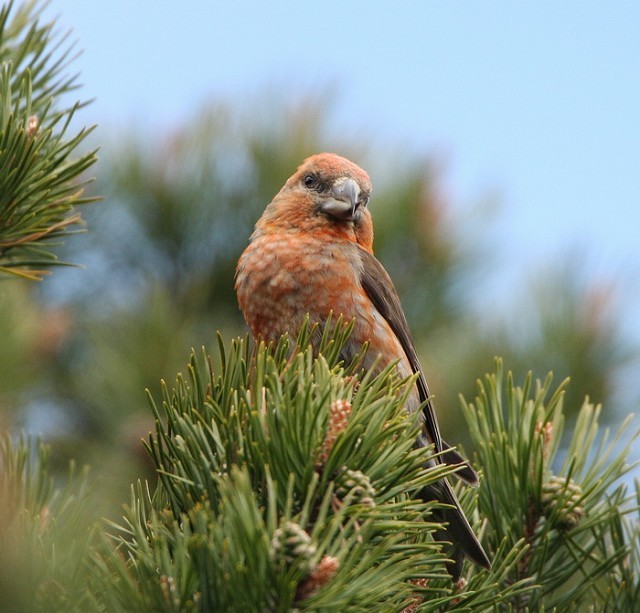Cuckoo joins the growing list of the UK's most threatened birds
The latest assessment of the status of all of the UK's 246 regularly occurring birds — Birds of Conservation Concern 3 — shows 52 are now of the highest conservation concern and have been placed on the assessment's red list. The revised red list now includes even more familiar countryside birds, including the Cuckoo, Lapwing and Yellow Wagtail, joining other widespread species such as the Turtle Dove, Grey Partridge, House Sparrow and Starling.

Cuckoo, Amwell GPs, Hertfordshire (Photo: Keith Chapman)
Alarmingly, red-listed species now account for more than one in five (21%) of all the UK's bird species. This is a far higher proportion than compared to the last assessment in 2002, when 40 species (16%) were red listed. Most species on the red list have suffered a recent halving of range or population in the UK, or have undergone a historical decline since 1800.
Amongst the species new to the red list is a suite of birds visiting the UK in summer, notably the Cuckoo, Wood Warbler, and Tree Pipit. These birds are widespread, but rapidly declining, summer visitors to the UK. Their addition to the red list is highlighting the concern that many long-distance migratory birds nesting in Europe and wintering in Africa are increasingly in trouble. Currently 21 of the birds on the red list are summer visitors to the UK, with the majority of these spending the winter in sub-Saharan Africa.

Hawfinch, Forest of Dean, Gloucestershire (Photo: Lewis Thomson)
The continued decline of widespread farmland and woodland birds is a theme which has developed since the compilation of the last list in 2002. Lapwing, a formerly much more widespread wading bird, and the Hawfinch, a woodland bird largely confined to England, have both joined the red list in the latest assessment.
Three species of seabird join the red list for the first time. The Balearic Shearwater — a smaller relative of the albatross — visits the UK from its Mediterranean breeding grounds regularly each autumn. This seabird, which is thought to face a higher risk of global extinction even than the Giant Panda, is the rarest bird to occur regularly in the UK. Highlighting concerns about the fortunes of seabirds around the northern coasts of the British Isles, the Arctic Skua has joined the red list straight from the 2002 green list: the only species to do so. The familiar Herring Gull also joins the red list as its population has more than halved in recent times.
For the first time two winter-visiting birds have joined the red list. The Dunlin and the Scaup have been placed on the red list because of declines in wintering populations. The ongoing decline of the Dunlin population has seen this wader slump to its lowest levels since recording began.
While a link to climate change has not been demonstrated, the addition of five species on the southern edge of their nesting range in Britain (Temminck's Stint, Ruff, Whimbrel, Redwing and Fieldfare) to the red list may provide some evidence of range shifts. These species have only had a toehold in the UK in recent decades and now that appears to be slipping. (However, Redwing and Fieldfare are still plentiful visitors to the UK in winter.)

Scottish Crossbill, Aviemore, Highland (Photo: Dean Eades)
However, the 2009 assessment does contain some good news. Six species (Stone Curlew, Woodlark, Quail, Scottish Crossbill, Bullfinch and Reed Bunting) have been removed from the 2002 red list, largely because of a recovery in their numbers or range, or a better understanding of their populations. These species are now placed on the amber list.
The Stone Curlew is a bird of farmland and open countryside. Virtually confined to Wessex and central East Anglia, the Stone Curlew population has increased because of the fantastic efforts by landowners to improve the fortunes of this striking wading bird. Improvements in land management, especially of heathland, have also led to a dramatic increase in the UK population of the Woodlark, a heathland bird. The Bullfinch and the Reed Bunting have also been placed on the amber list following modest recoveries in their populations.
The Scottish Crossbill — the only bird species with its total world range confined to the UK — has also been removed from the red list. A survey (funded by RSPB and Scottish Natural Heritage) found approximately 13,000 individuals of this colourful endemic finch, and its population is currently thought to be stable.
| The changing lists | 2002 | 2009 |
|---|---|---|
| Red | 40 species | 52 species |
| Amber | 121 species | 126 species |
| Green | 86 species | 68 species |
| Total species considered | 247 | 246 |
Five species assessed in 2002 (Bluethroat, Common Rosefinch, Icterine Warbler, Hoopoe and Snow Goose) were not considered in the 2009 revision, because they failed to meet the qualifying criteria for inclusion. Four species not assessed in 2002 (Balearic Shearwater, Shorelark, Yellow-legged Gull and Hooded Crow) were considered in the 2009 revision for the first time.
Birds of Conservation Concern 3 is compiled by a partnership of organisations, including the British Trust for Ornithology, Countryside Council for Wales, Game & Wildlife Conservation Trust, Joint Nature Conservation Committee, Natural England, Northern Ireland Environment Agency, RSPB, Scottish Natural Heritage, and the Wildfowl & Wetlands Trust. The full Birds of Conservation Concern 3 report will be published in the June edition of British Birds.

